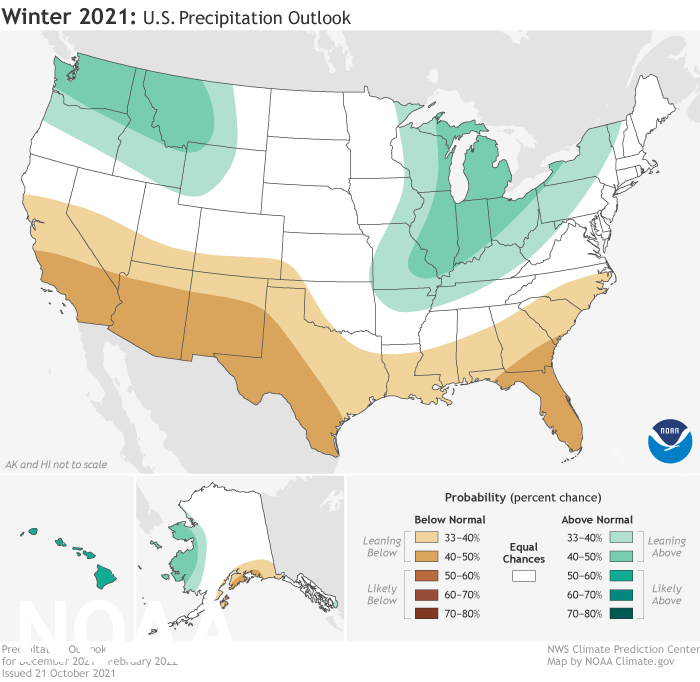By Erica Thomas, Managing Editor
The National Oceanic and Atmospheric Administration (NOAA) predicts above-average temperatures this winter across the South and most of the eastern states.
La Nina climate conditions have emerged for the second winter in a row, according to NOAA’s Climate Prediction Center.
“Using the most up-to-date observing technologies and computer models, our dedicated forecasters at the Climate Prediction Center produce timely and accurate seasonal outlooks to help communities prepare for the months ahead,” said Michael Farrar, Ph.D., director of the National Centers for Environmental Prediction.
The Southeast is most likely to experience warmer temperatures this winter, while below-average temperatures are predicted for southeast Alaska and the Pacific Northwest eastward to the northern Plains.
NOAA is also monitoring drought conditions.
“Consistent with typical La Nina conditions during winter months, we anticipate below-normal temperatures along portions of the northern tier of the U.S. while much of the South experiences above-normal temperatures,” said Jon Gottschalck, chief, Operational Prediction Branch, NOAA’s Climate Prediction Center. “The Southwest will certainly remain a region of concern as we anticipate below-normal precipitation where drought conditions continue in most areas.”
Drier conditions are also expected in south-central Alaska, southern California, and the Southwest.
NOAA said the Pacific Northwest, northern Rockies, Great Lakes and parts of the Ohio Valley and western Alaska have the greatest chances for wetter-than-average conditions.

NOAA’s seasonal outlooks provide the likelihood that temperatures and total precipitation amounts will be above-, near- or below-average, and how drought conditions are anticipated to change in the months ahead. The outlook does not project seasonal snowfall accumulations as snow forecasts are generally not predictable more than a week in advance.










